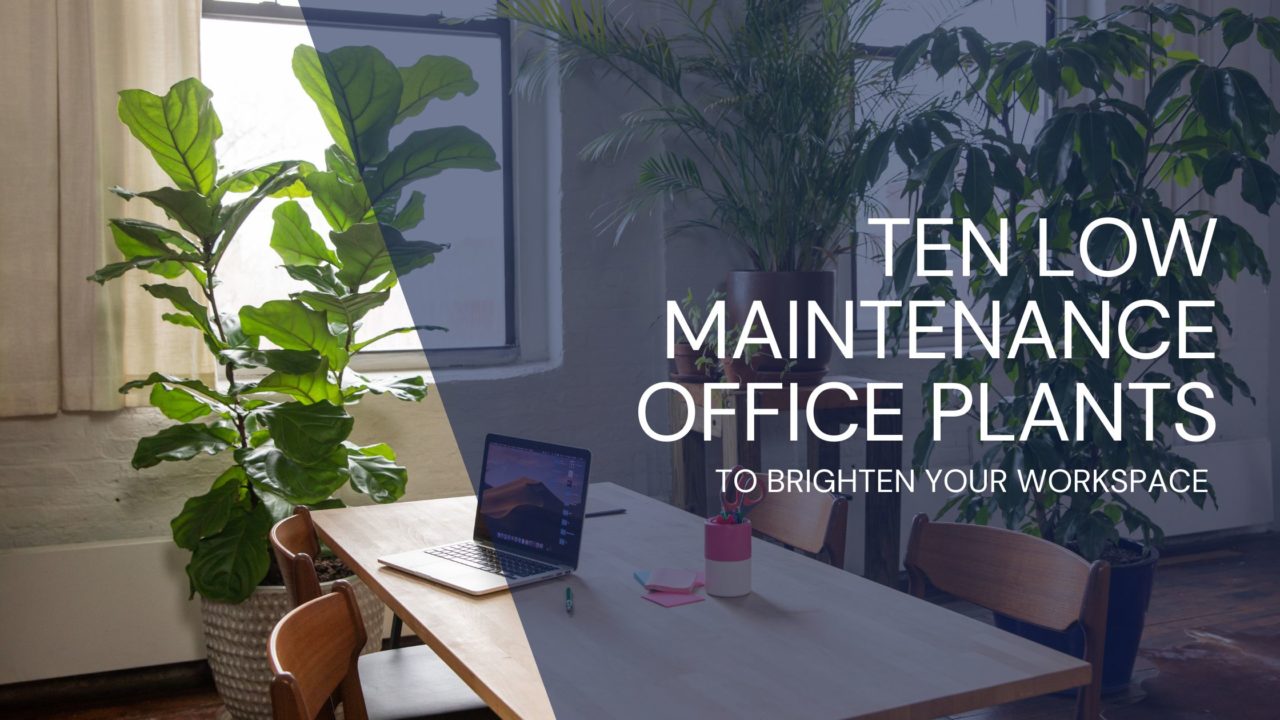There are countless proven benefits to having more greenery around your office. It’s a quick and easy way to transform your environment from a beige and run of the mill place of work to a bright, vibrant and inspiring area which people will be delighted to arrive at in the morning. Whether you are a green fingered expert or a complete novice, it’s easier than you think to install and also maintain.
There really is no excuse, with some indoor plants suiting lots of sunlight to others thriving in low light conditions. You can even fill your place of work with plants that require very little attention or watering.
It needn’t be a full-time job to keep things looking at their best, nor do you need the services of Alan Titchmarsh or Charlie Dimmock to have a natural, vibrant and inspiring landscape to welcome clients into!
An indoor plant or five can help to not just brighten up your office space but also add all sorts of additional benefits.
The benefits of office plants
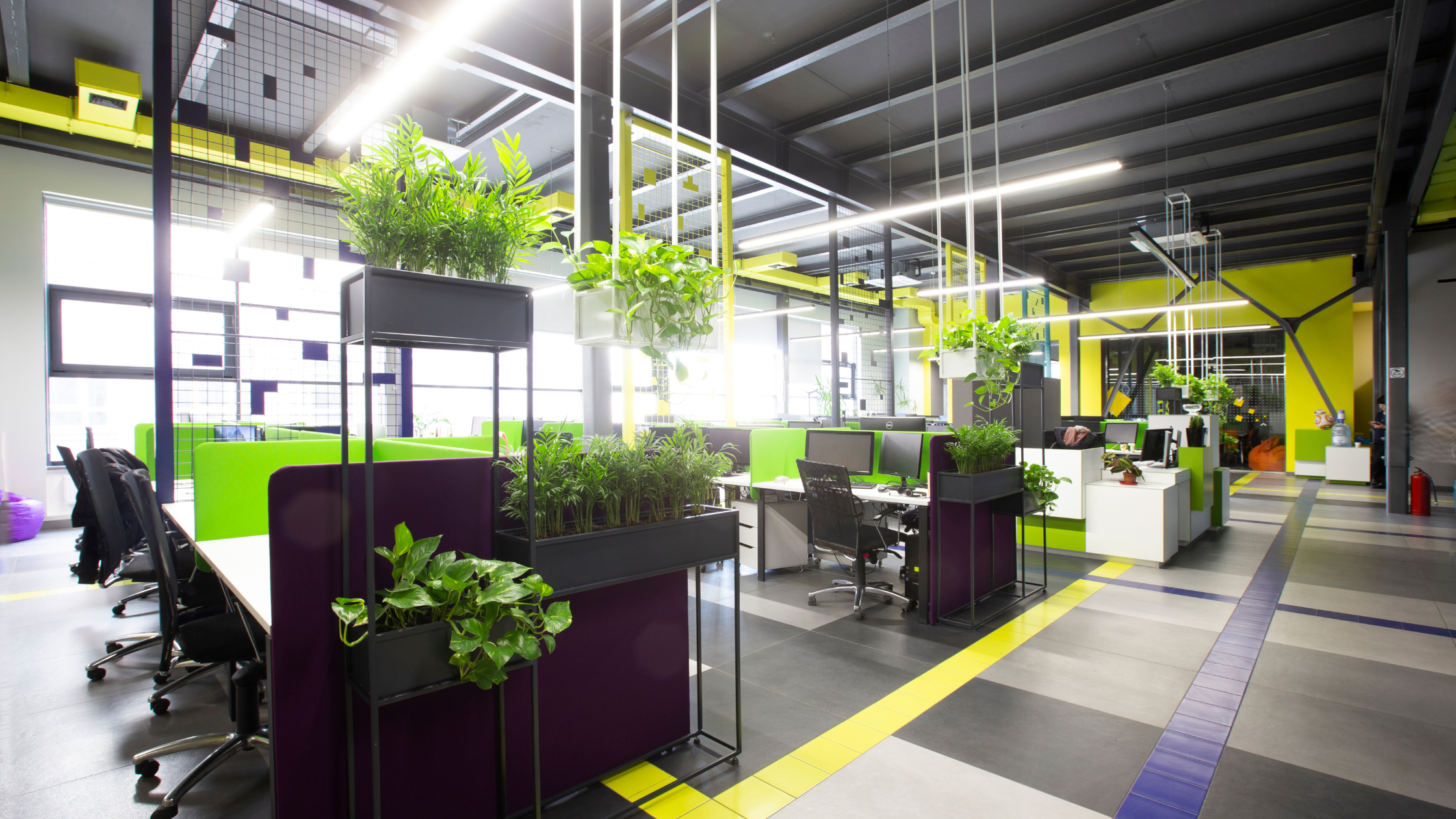
Not only will it make your office environment look great, but having something to water every week can help reduce stress and also improve the cleanliness of the air in your office. Studies by NASA found that levels of formaldehyde, benzene, and trichloroethylene were reduced by having air purifying plants around the office which leads to better air quality.
Studies suggest that an office filled with foliage enjoys an increased level of productivity by 6%, and that employee wellbeing was increased by 15%. Generally speaking, having plants around the office makes you happier, healthier, and ready to take on the work day! Add some plants to a healthy office routine and you’ll be feeling the benefits in no time!
Office plants can also help reduce noise levels. Research by London South Bank University found that putting large pot plants in the corners and edges of an office will help to dramatically reduce background noise and create a calmer, quieter working environment that will be easier and more relaxed to work in.
Excess office noise has been found to lead to all sorts of issues, from stress, unhappiness, headaches and migraines, and also a notable drop in focus and productivity. Where some noise is unavoidable during busy times in the office, it’s good to know that by strategically adding some office plants into the work space you can not only make the environment more pleasant but also easier to work in as well.
It has also been suggested that an office designed with plenty of greenery can help retain staff. A working environment around botanical and natural elements was found in a study of 440 Amazon workers (aptly) to have led to greater job satisfaction and enhanced commitment to the company when compared to staff who did not work around botanical and natural elements.
Office plants and mental health

Office plants may also be beneficial to mental health. The University of Technology in Sydney found significant reductions in stress when plants were introduced to their working environment. This included a drop in 38% of fatigue, 44% less hostility and anger, 37% less tension, and a 58% drop in depression and dejection.
Horticultural therapy has been used for some time to help those who are coping with poor mental health. Maintaining indoor plants has been found to lower stress and is a welcome break from more stressful office based tasks.
It’s no wonder more people are taking biophilia into account when designing the layout of their workspace.
Wait, what’s biophilia?

Biophilia is described by the Cambridge English Dictionary as the “love of living things and nature, which some people believe humans are born with”.
Many people believe that the love of nature is inherent and that incorporating this into the design of open space by increasing the connection that we have to nature helps to create a more stimulating and rewarding environment.
This can be done through the incorporation of direct and indirect experiences.
Direct experiences
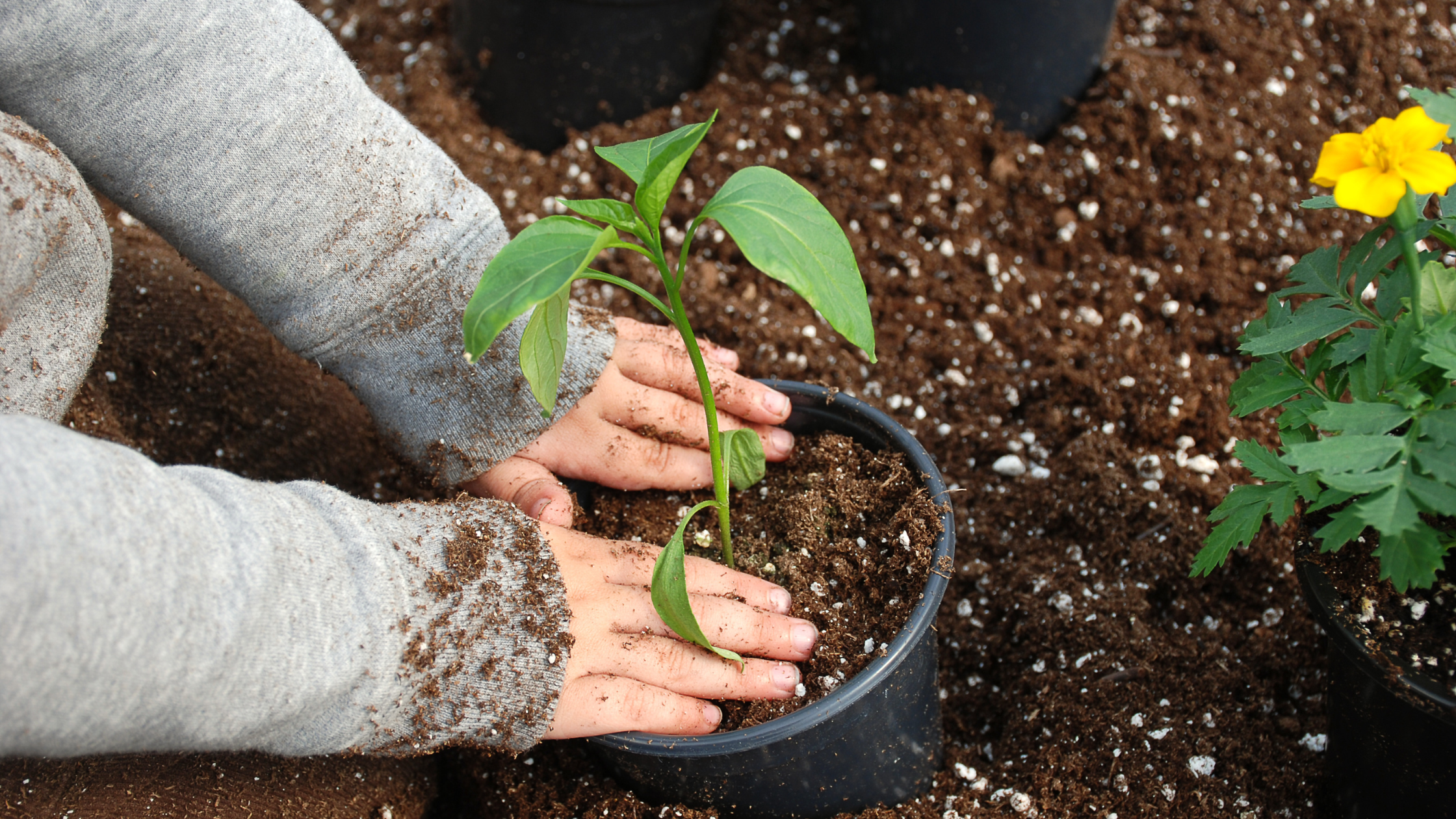
This is simply put anything that is an actual, tactile experience that we can interact with.
Where it is quite common that this may be pot plants, flowers, even shrubs or small trees placed strategically around the workplace, this can also include things such as natural light, air, and water.
It can even stretch as far as self-sustaining ecosystems, animals such as fish, or fire. It’s worth keeping in mind that these will be much more difficult to maintain, but these can all help to create a connection with the great outdoors, but within the confines of your office or work space.
This all helps us to feel more in contact with nature and as a result more relaxed and mentally stimulated in the workplace.
Indirect experiences

This is where we use images or representations of nature to help trigger our inherent biophilia.
This could be something as simple as photos of nature on the walls but it can also include the use of materials such as wood, brickwork, or even leather upholstery on the seating. This all helps to remind us of natural elements, even if we don’t have the space or time to maintain living, natural elements such as plants, shrubs or trees in the office.
We’ve been very careful in some of our premises to make use of natural materials already found in the building pre-renovation (e.g. turning floorboards into desks and tables) and this could be seen as an indirect experience. Not only this, but it helps to keep the soul and original intentions of the building throughout the years alive.
Even the use of natural colours (otherwise known as earth tones) or simulating natural light and air through technology can help in the biophilic design of an office space.
What should I take into account when designing my workspace?

If you search for how to incorporate biophilic design into your office space, you may find some talk about “neighbourhoods”.
Much in the same way as we will encounter different environments when we go for a long walk on a day off (e.g. woods, fields, parks, lanes, etc), it is seen as beneficial to create a few separate areas within the office.
Depending on the size of your workspace, this may be easier or more difficult for you to achieve. However, it’s worth considering if you can use plants (or other resources) to help make create the best office you can. Perhaps even finding ways to incorporate light (natural or through bulbs that simulate natural light) can make a huge difference to your space.
You also need to take into account how much direct sunlight you have and the time you have to maintain your plants. Office spaces can be nice, bright spaces with windows and fresh air, but if you get very little light then you may need a plant that is hardier and better suited. Consider an office plant that is easy to care for that doesn’t require much light or attention and you’ll give your office environment the best chance to thrive.
It may even be worth asking everyone if they want to bring in their own desk plant. It’s amazing how much people will be happy to take responsibility for their own plant!
The best office plants for an office with lots of natural light
Aloe Vera
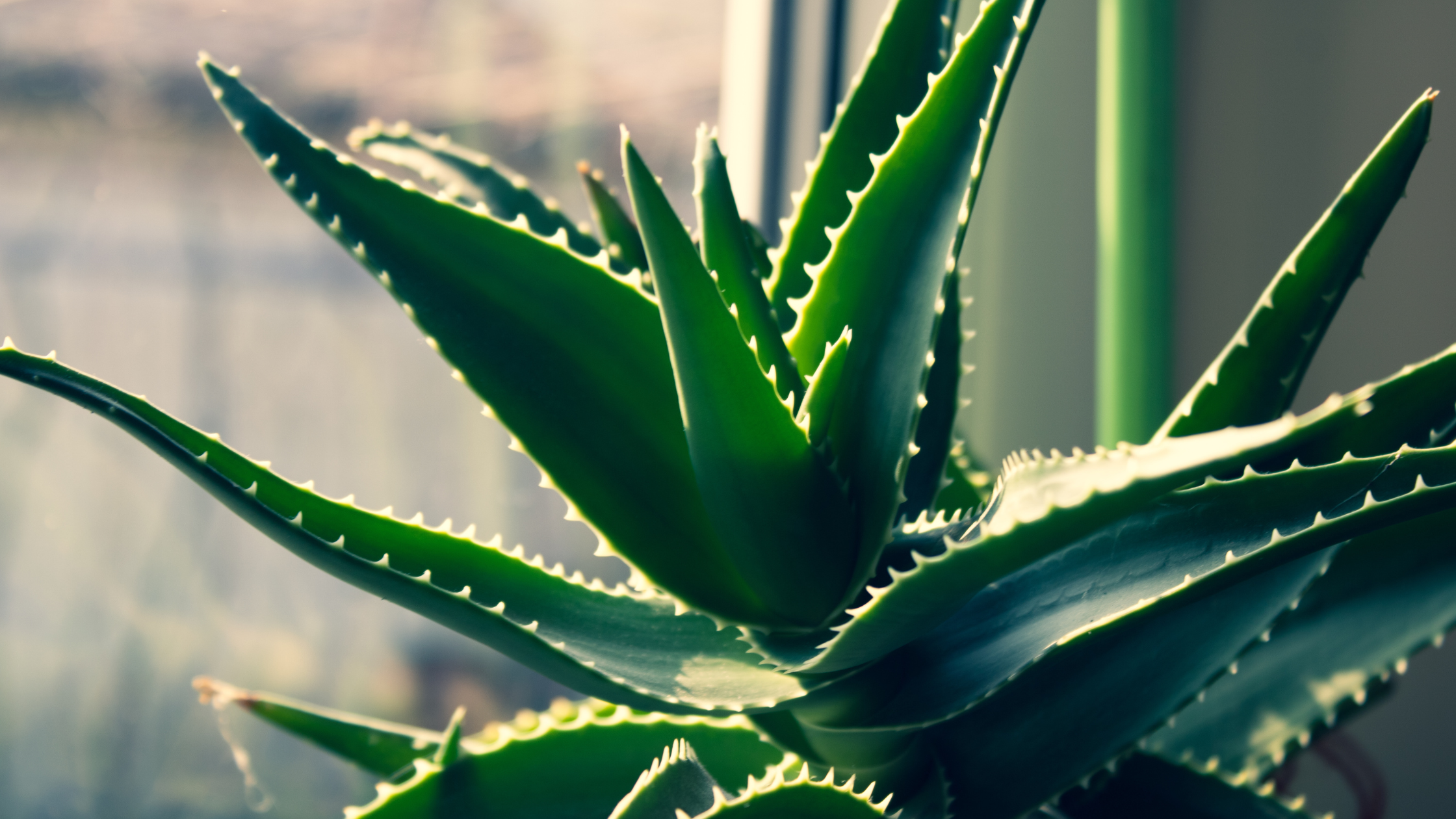
Not just what Jack Duckworth would say when he gets home on Coronation Street (and if you got that joke, hello fellow thirty-something-plus person) but a fantastic, low maintenance addition to your office that is one of the best office plants.
Known by some as ‘nature’s air purifier’, this is a brilliant plant to have in your office if you have plenty of direct sunlight.
How to care for an aloe vera plant
It does require drainage, but infrequent watering will be absolutely suitable for an aloe vera plant. Air plants will help purify the office air around you and give you cleaner, fresher air to breathe all day long.
Ponytail Palm
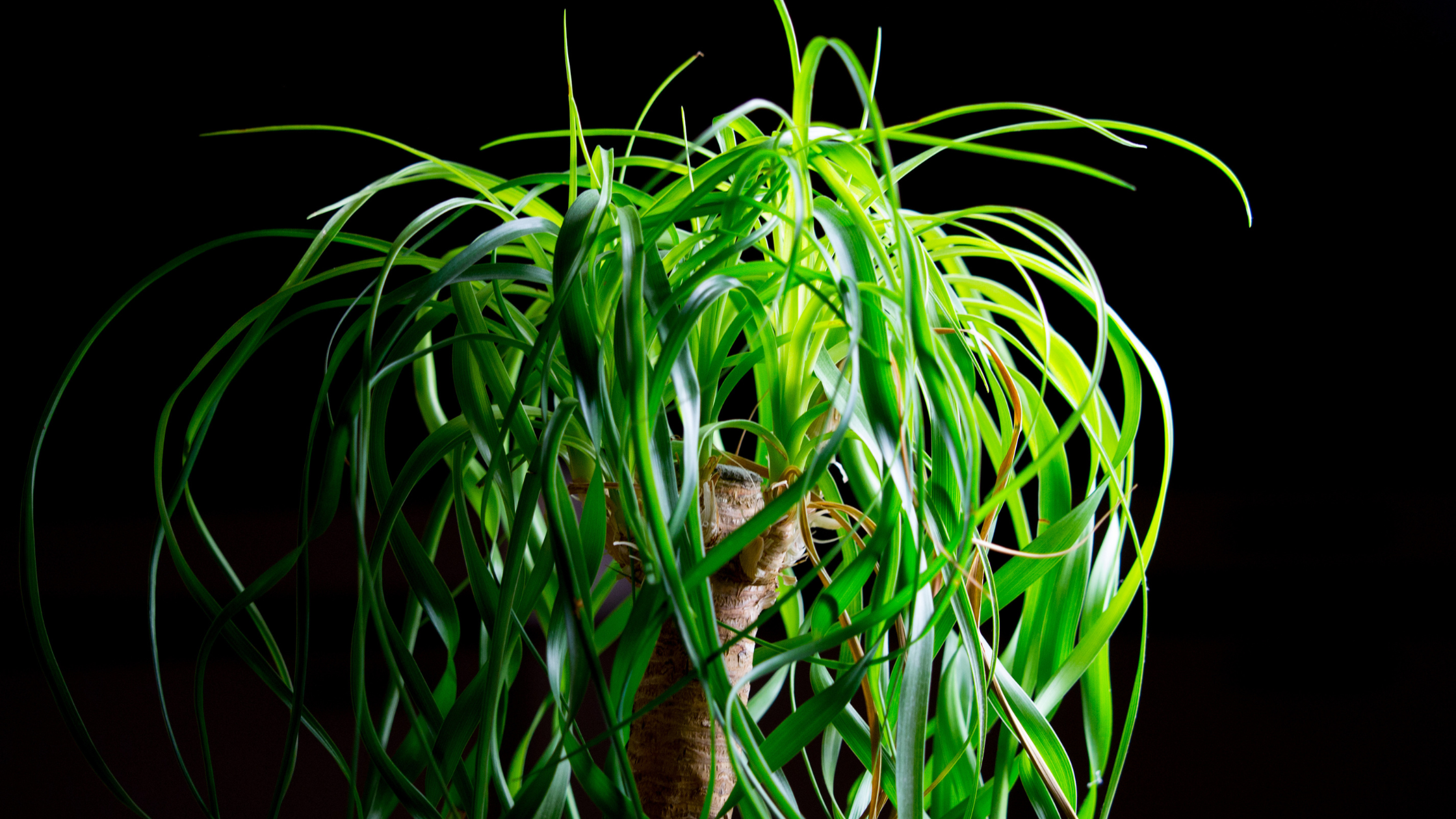
Another plant that doesn’t need a huge deal of attention, this is a plant that will stand out and help create a lovely low maintenance neighbourhood within your office space. Its trailing green leaves look fantastic and the small size mean it’s perfect for a desktop or reception area.
How to care for a ponytail palm
Reminiscent of a mini palm tree, this needs to be planted with coarse soil and a little bit of sand, and even if you’re highly forgetful this can get away with a weekly water. It’s a slow grower as well which means it won’t need to be repotted often at all.
Hibiscus
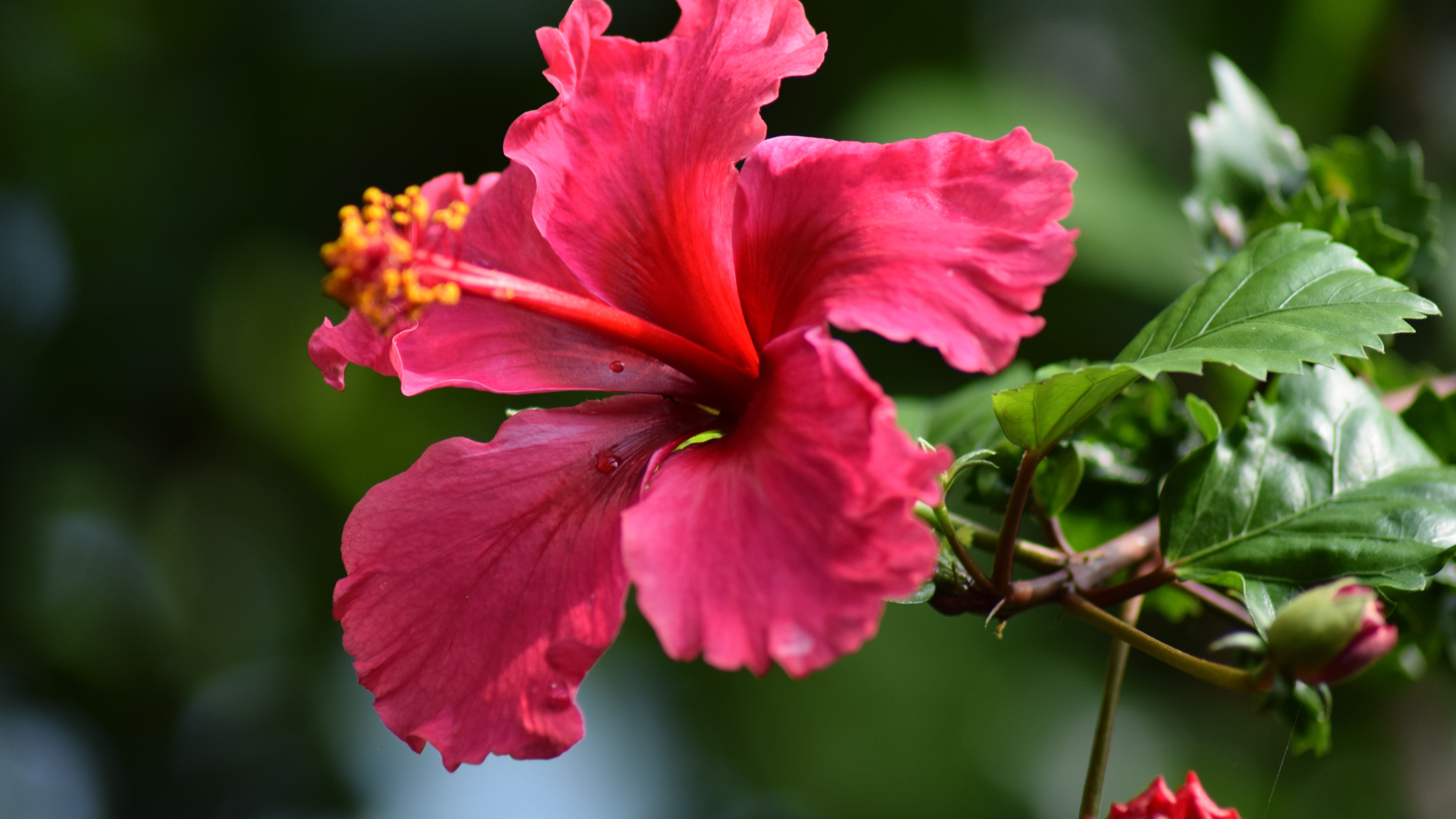
Hibiscus will add a flourish of bright colour to help create the best office environment if you want pinks, yellows, oranges, or reds! Commonly used in cooking, baking, and drinks (hibiscus is a tremendous addition to a good margarita if you’re partial to one), this is something that will help bring joy to those who enter your workplace.
How to care for a hibiscus plant
These do require some drainage and regular watering but if you’re looking for something to set a colourful and flamboyant impression then this is an absolute showstopper.
Yucca Plant
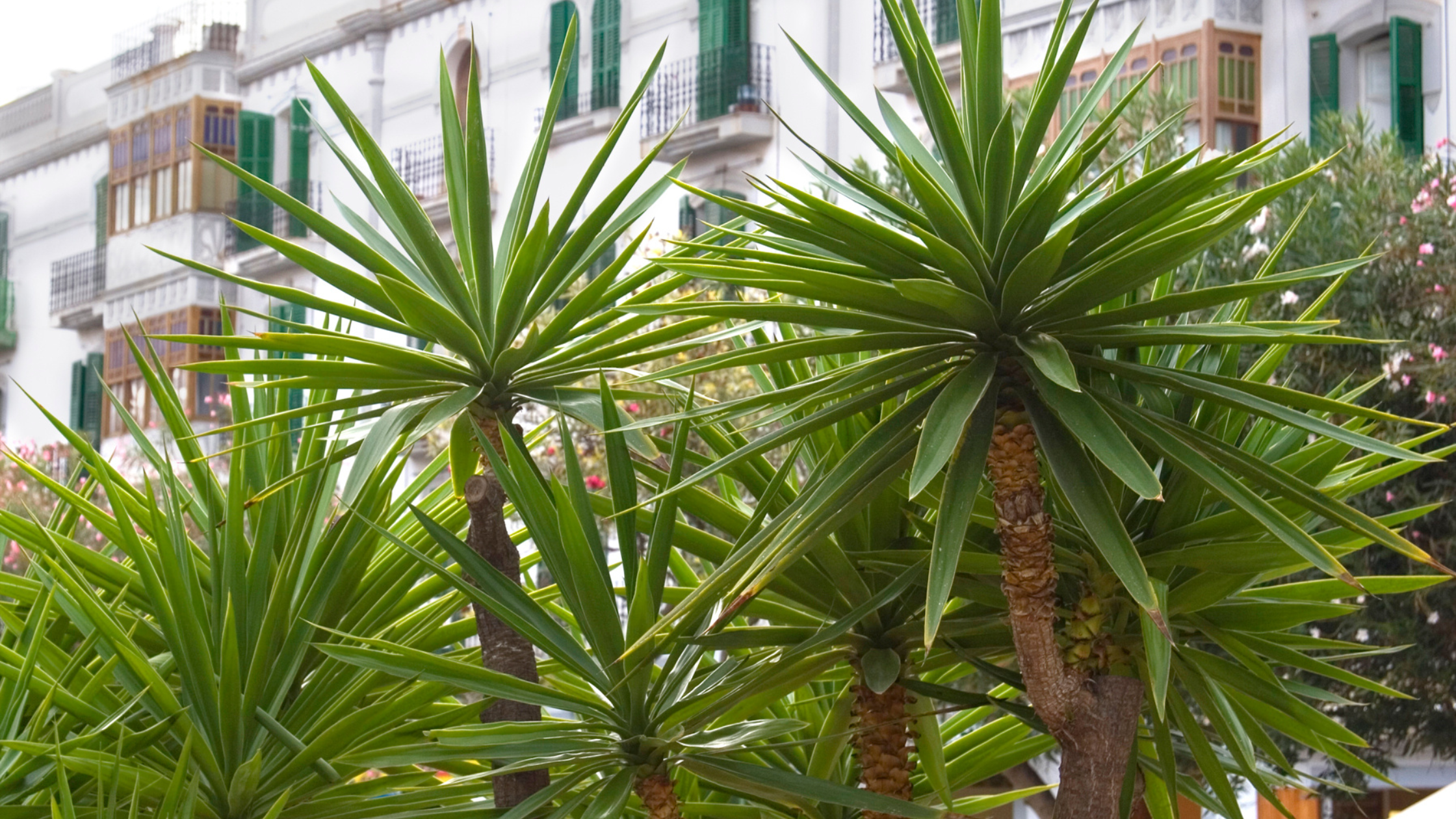
First things first, it’s worthwhile pointing out that the yucca plant can grow up to a thirty-foot tree, so it’s worthwhile having a plan for its future of it! Having said that, it’s incredibly slow growing so it will be a fantastic plant to have around the office for some time.
NASA found the Yucca to be one of the best-rated plants for purifying the air, and you can never have too many air plants around the office or home.
How to care for a yucca plant
They’re great for creating a natural divider due to their height and even better, require very little watering (only really when the soil has dried out, once a week at absolute most).
Cacti
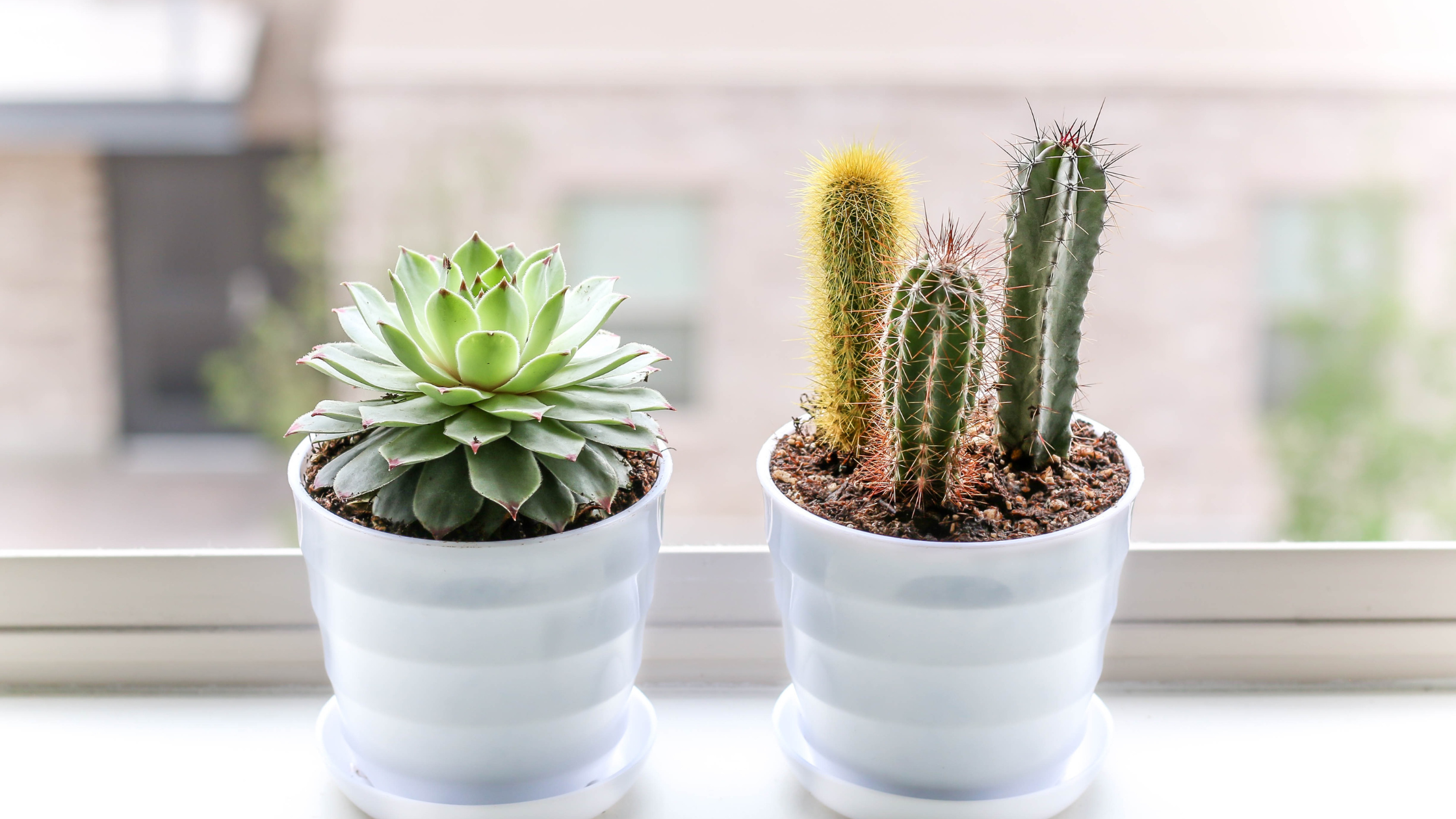
In general, a cactus is a brilliant plant for a sunny office window ledge. A cactus will help to add humidity to the air, reduce pollutants and bring general peace and serenity to the area. Even better, larger cacti are brilliant at helping to reduce unwanted background noise! It also makes a fantastic house plant.
How to care for a cactus
To benefit from an air purifying cactus in your office, make sure that it gets a good amount of natural light, water it every two to three weeks and it will thrive and survive in your office!
The best plants for an office with low light
Spider Plant/Snake Plant

Both very effective oxygen producers, spider plants and snake plants are also fantastic at reducing toxins in the air. It even reduces the amount of CO2 in the air during the night as well as day so it’s hard at work even when you’re tucked up in your bed at home! The spider plant is more of a trailer and the snake plant is more of a spiky affair, but both will bring much-welcomed greenery to the workplace.
A striking, green, and leafy succulent, a snake or spider plant will be super easy to maintain and keep happy. They will thrive in sunlight, but also absolutely fine in full shade, and even better it needs very little watering (once every one to two weeks) and is extremely difficult to kill off!
How to care for a snake or spider plant
It’s about the perfect office plant as you can get. As ever, just make sure that you don’t overwater them and that the soil is kept slightly moist and they will happily take their place in your workspace. Snake plants and spider plants also look fantastic together with their very different green leaves as part of a display.
Peace Lilies
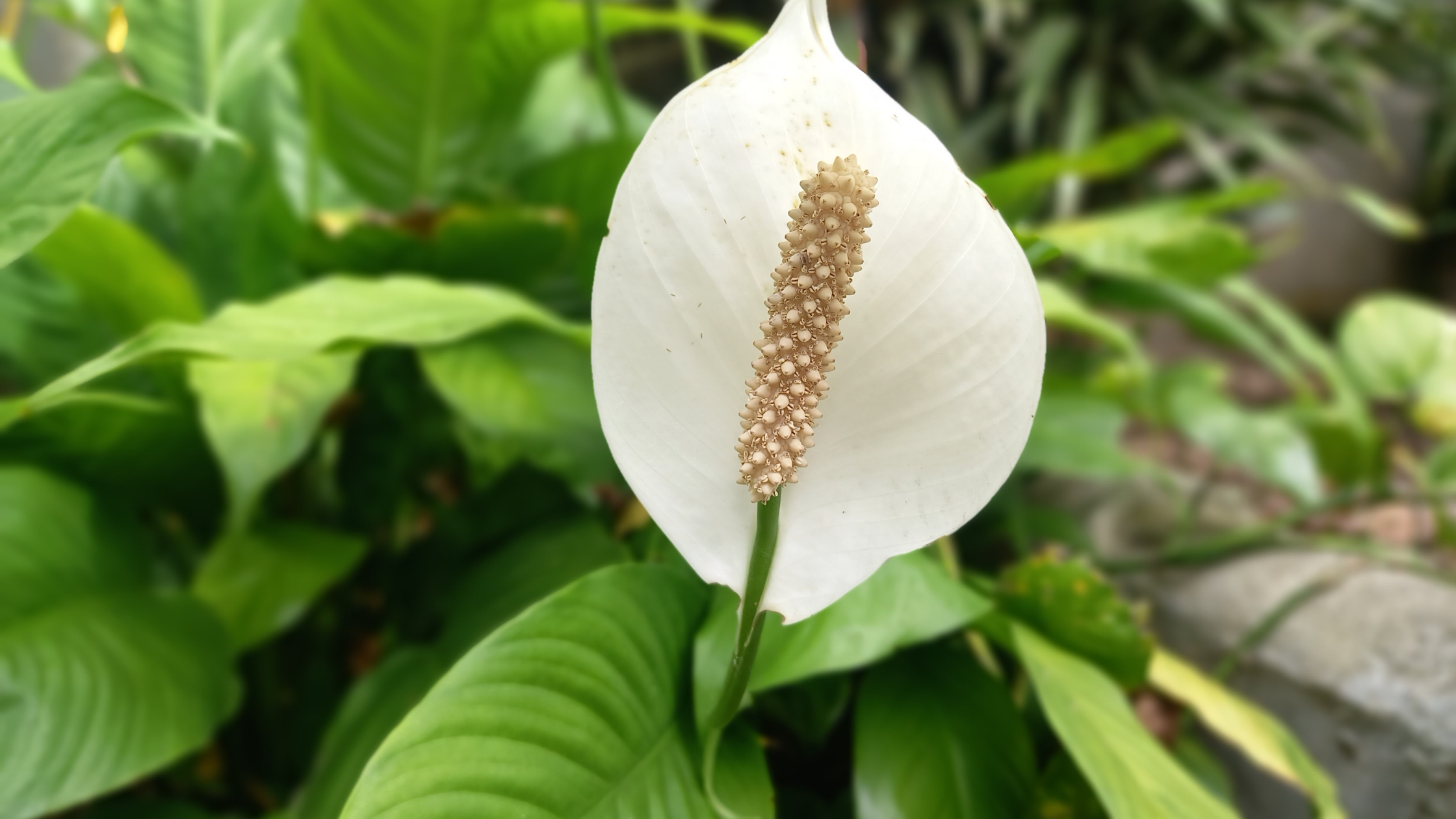
Not only is it the perfect present for the special police constable in your life (and yes, this absolutely constitutes permission to watch ‘Hot Fuzz’ at your desk right now), it has some incredible benefits that make it a fantastic office plant and not just the popular low maintenance indoor house plant that it is already.
They don’t require a huge deal of attention but will be well placed in a corner or placed in a row as a natural divider in the office. The versatility of them does mean that they can be used in more than one neighbourhood and will produce oxygen and absorb CO2 throughout the office.
How to care for a peace lily
One thing that Nicholas Angel does get wrong in the movie is that the peace lily doesn’t like overwatering – watering your peace lily need not be a major part of your social calendar. Depending on the sort of light you have it in the appearance of it will differ; direct light is a no-go, indirect light will lead it to bloom more, and lower light conditions will make it look like a more traditional piece of foliage.
However, as another low-maintenance plant that does well in low light, this is worth absolute consideration to have in the corner of your workspace.
Heart Leaf Philodendron
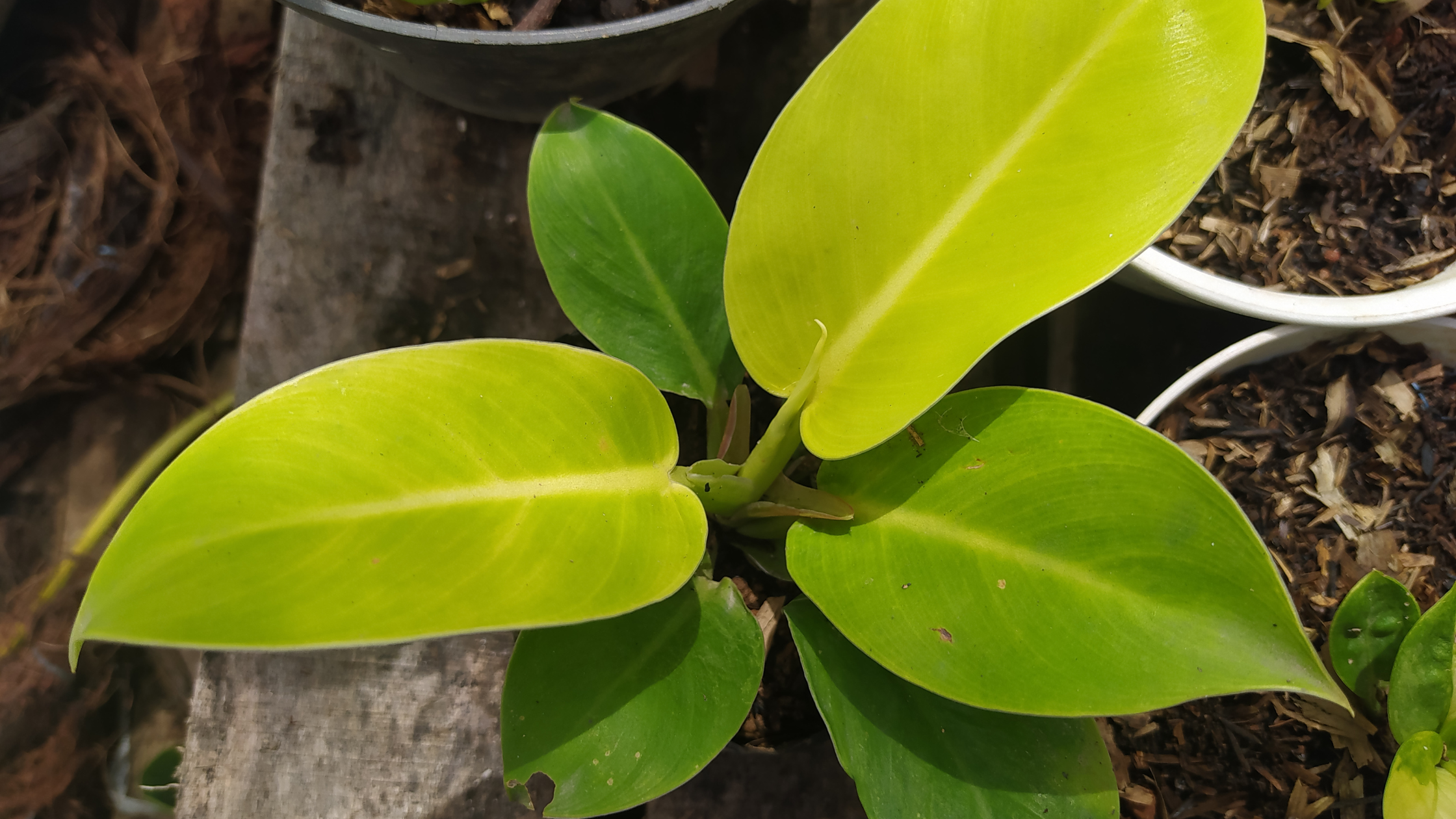
Named due to its heart-shaped leaves, this is a lovely leafy plant that can either look stunning hanging down from a hanging basket or can be given a bamboo support to grow up the way and provide a stunning natural backdrop against an office wall. It’s brilliant at creating an evergreen neighbourhood in your office that is low maintenance and requires little water.
It’s also excellent at purifying air and removing allergens which is great for those who suffer from respiratory issues like asthma, but it also helps to add humidity to the air.
How to care for a philodendron
Another plant that favours underwatering to the opposite, this doesn’t need direct sunlight. As indoor plants go, this is a real gem.
Baby Rubber Plant
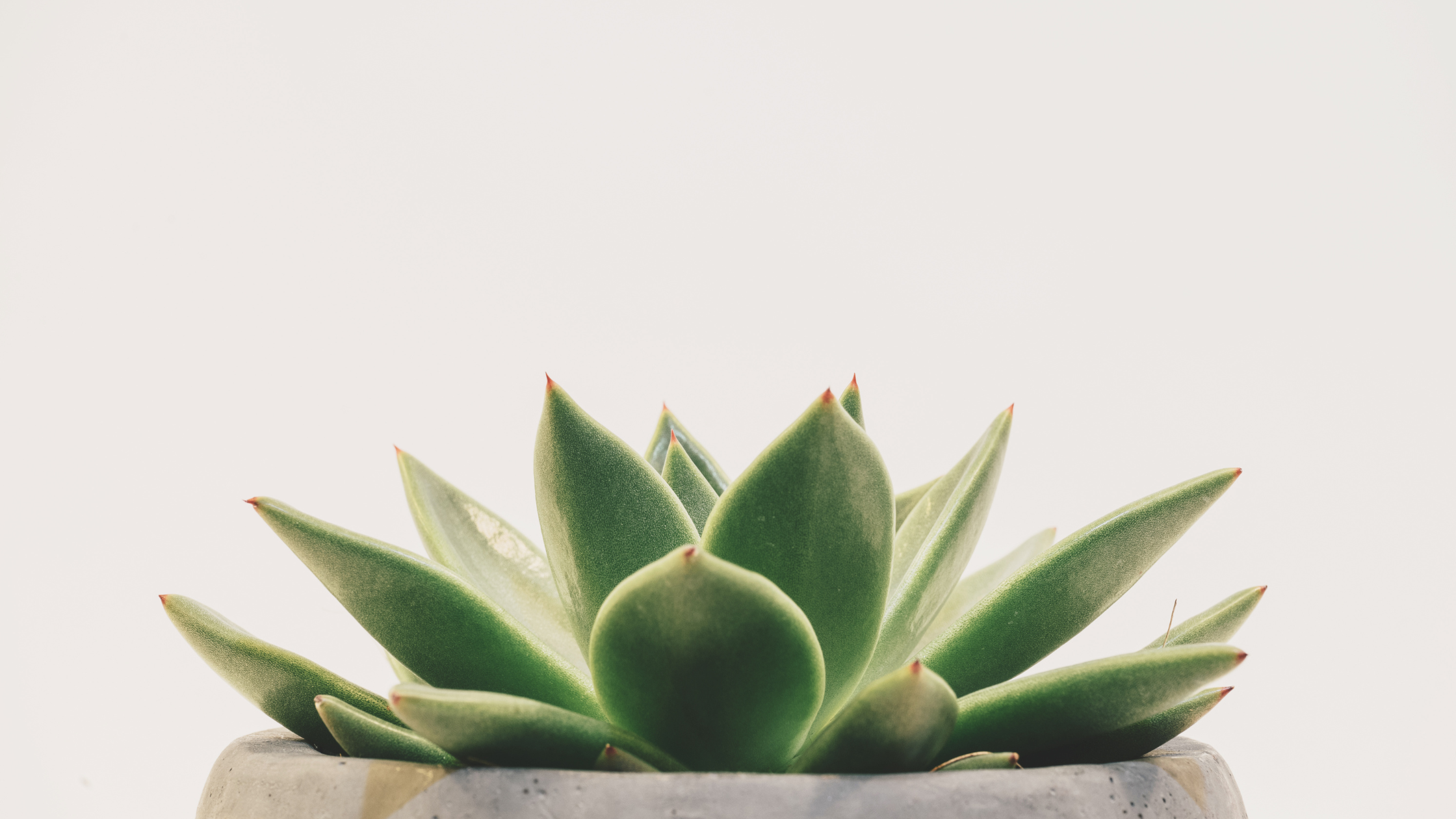
Due to its size and adaptability, this makes a brilliant addition to your desk. The baby rubber plant (or peperomia to give it its formal name) is super easy to maintain, making it an ideal office plant. As long as the soil is kept lightly moist and isn’t allowed to dry out, it will be happy to brighten up your desk. It will happily grow in a small pot and its shiny green leaves have been found to help purify the air.
How to care for a baby rubber plant
Just make sure that you don’t overwater it as with some of the other green, leafy plants on this list it’s far more dangerous to give it too much water than too little. It does need some light, but it is quite happy with the artificial stuff if that’s all you have.
In Brazil, baby rubber plants are commonly given as a gift to bring good luck to the recipient.
Conclusion

Happy, healthy work settings tend to lead to a healthy, happy workplace. We hope that this guide to what we think are the best office plants gives you some inspiration to get green-fingered in the office and to make an indoor botanical landscape of your own.
Adding some indoor greenery to your desk or workspace may help you find unexpected benefits in the form of enhanced productivity, improved air quality, a quieter office, and a happier workplace overall. Not just that, but a bit of bright foliage or luscious greenery on your desk may help you survive even the most stressful of days and will give you something to spend a couple of minutes maintaining during the week!
Biophilic design has been attributed to reduced stress levels and improved mental health which makes it an apt and enjoyable way to improve many facets of your working week in the office.
What plants do you have in your work place or home? Make sure to let us know!

